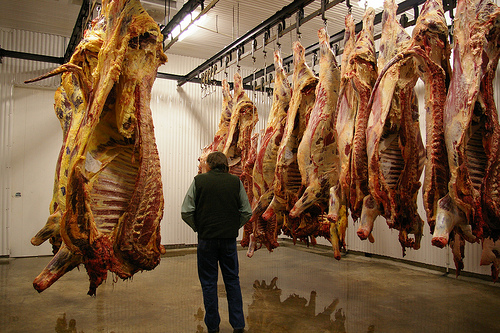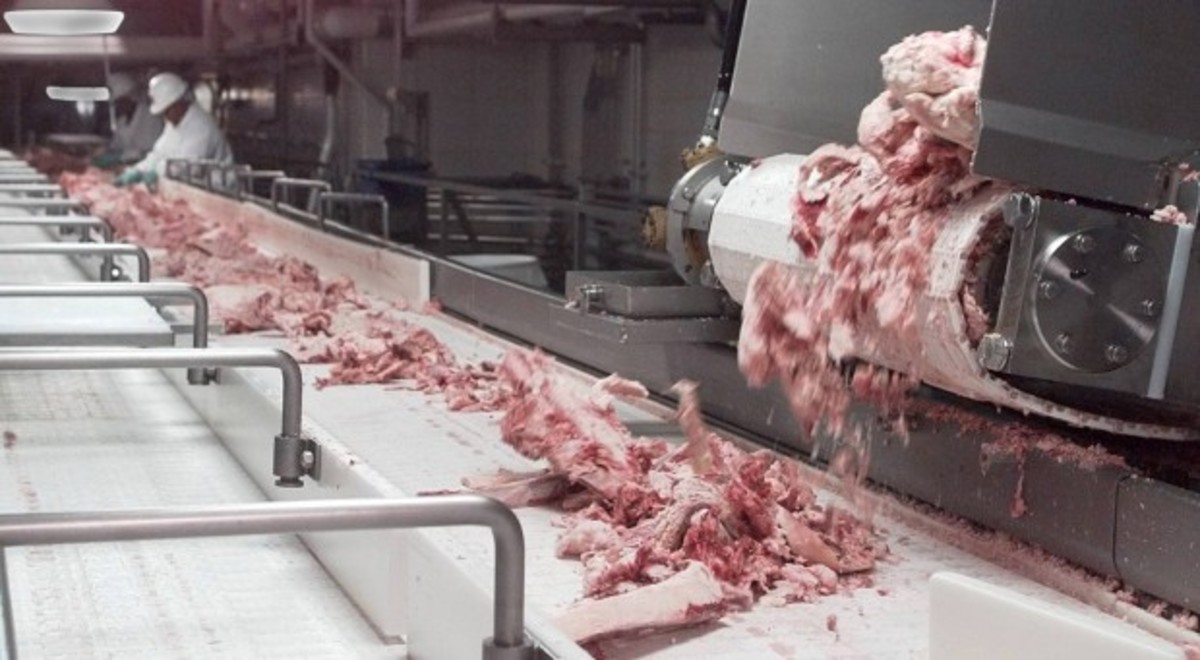What is pink slime: A brief overview

What's in a name?
“Lean Finely Textured Beef” (LFTB) was first nicknamed “pink slime” by scientists at the US Department of Agriculture. Never intended for outside ears, the name leaked and caught on, creating a sudden a surge of negative social media and public outcry. As a result, several meat plants halted production and businesses declared themselves slime-free, as consumers demanded labeling or eradicating this food product entirely.
Celebrities like Stephen Colbert and chef Jamie Oliver (see video) have brought pink slime into the spotlight.
Jamie Oliver: 70% of America's Beef treated with ammonia
What is it?
Pink slime was developed by Beef Products, Inc. (BPI) as cheap hamburger filler. Meat trimmings are simmered at a low heat, allowing the fat and meat to separate (thus lean). The meat is then sent through a blender and doused with ammonium hydroxide to kill E. coli bacteria.
People are generally upset about pink slime for two reasons, one being that it’s doused in ammonia, a common ingredient found in household cleaners (mmm, lemony fresh). The FDA (Food and Drug Administration) has ruled it’s usage on food as “safe,” and the USDA (US Department of Agriculture) in fact thought that this treatment was so effective, that it stopped testing ammonia-treated ground meat for E coli bacteria. But a 2009 New York Times article revealed that (a) ammonia-treated ground beef has in fact still been contaminated with E. coli numerous times over recent years, and (b) government has consistently failed to recall these products, even when these cases were confirmed by the industry!
A second reason for public distaste is that people don’t like the idea of eating meat “trimmings,” since these meat scraps were once only destined for dog food in America.
Where is it found?
Before the public fervor, pink slime was found in 70% of the ground beef sold at supermarkets, fast food chains, and school cafeterias. The public anger however led to several fast food restaurants including McDonalds, Burger King and Taco Bell, and supermarkets such as Safeway, Kroger’s and Supervalu, to declare for themselves a “pink slime”-free future. The USDA also ruled that meat suppliers can voluntarily label their products as LFTB-free.
Who's involved
Some politicians and governors have rallied behind the business, saying that this smear campaign is unfair and misinformed. Marion Nestle, food politics author notes that this is: “breathtakingly high-level—and perhaps unprecedented—support for the public relations troubles of a private food company.” Curious.
But plenty of politicians have spoken for consumers, including Representative Chellie Pingree of Maine who introduced in Congress the REAL (Requiring Easy and Accurate Labeling of) Beef Act.

The root of the problem
Our agriculture system needs fixing. The number of salmonella outbreaks in ground meat has increased in recent years, despite these “technological” safety ideas industry gets, like spraying ammonia on it. It has to do with the way that our meat is produced: the vast majority of the meat we buy is from animals raised in factory farms, where conditions are highly unsanitary (think thousands of animals packed together with no fresh air and feces and urine covering the floor). To compensate for these disease prone environments, animals are overdosed with antibiotics. When bacteria regularly come in contact with an antibiotic, they develop immunity, leading to “super bacteria” that live in the meat all the way through slaughtering, processing, packaging, and the trip to our plate. Finally, the food inspection agencies in the USDA and FDA are woefully underfunded – there is general consensus that they do not have the staff or funds to properly inspect food, especially not the immense meat packing plants.
It’s also important to think about why we have a food system that gives us pink slime: because we, as consumers, demand meat, and we demand it cheap. Taking meat trimmings and dousing it with an antimicrobial agent is certainly cheaper than investing in humane livestock systems and meat inspection protocol. Americans eat a lot of meat - just under 200 lbs per person per year. If we put less pressure on our agricultural system, and bought meat just a few times a week but bought the good stuff (humane, sustainably raised), that could simultaneously solve a whole host of environmental and human health problems.
In the end, our food system needs to be more transparent, so that consumers can choose what they put in their bodies.
What's your reaction?
Does hearing about pink slime make you stop buying (non-organic) ground beef or hamburger?
How do you avoid pink slime?
Buy organic, look for a label, or just avoid ground beef entirely!








